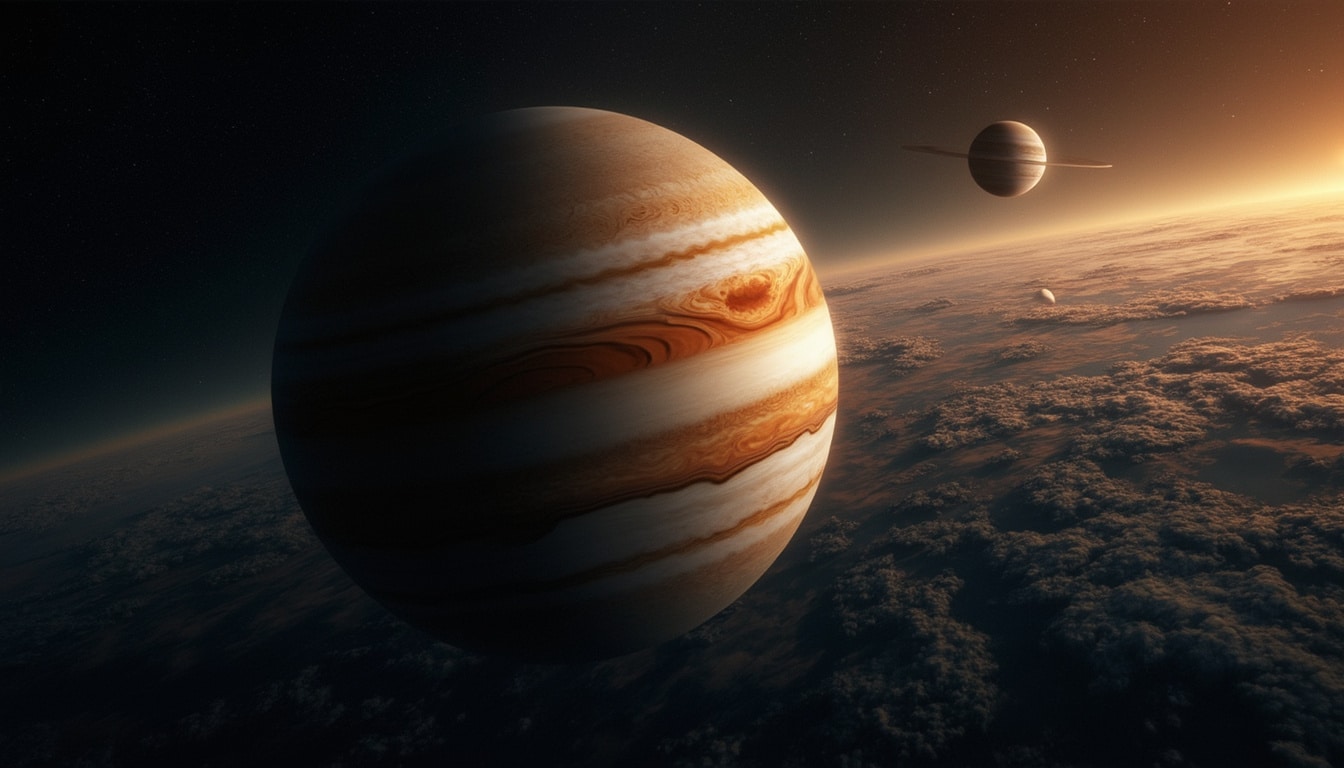The universe is a vast expanse filled with mysteries and wonders, especially when it comes to the various planetary atmospheres that we observe throughout our solar system and beyond. Each planet possesses a unique atmospheric composition that influences its weather, climate, and potential for supporting life. Understanding these atmospheres enriches our knowledge of planetary science and the ever-changing universe.
This blog post aims to dive deep into the characteristics of planetary atmospheres. We will navigate through the fluctuating gas compositions, extreme conditions, and how these atmospheres evolve over time. From the thick, toxic layers of Venus to the thin air on Mars, we will unravel the secrets contained in the skies of our neighboring planets. Join me on this fascinating journey through the cosmos as we explore how the atmospheres of different planets vary and what those differences reveal about the locations we inhabit.
The Basics of Planetary Atmospheres
Simply put, an atmosphere is a layer of gases that surround a planet. These gases are held by the planet’s gravity. The main components of an atmosphere can include nitrogen, oxygen, carbon dioxide, and trace amounts of other gases. However, the specific composition varies greatly from planet to planet, affecting everything from surface conditions to potential habitability.
The ability of a planet to retain its atmosphere is heavily influenced by its gravity and temperature. Planets with higher escape velocities tend to keep more of their gases. For instance, Earth’s gravity enables it to hold onto a denser atmosphere, which is vital for sustaining life.

Venus: The Greenhouse Giant
Venus is often referred to as Earth’s ‘sister planet’ due to its similar size, mass, and proximity. However, its atmosphere tells a different story altogether. Covered in thick clouds of sulfuric acid, Venus’s atmosphere is primarily composed of carbon dioxide (about 96.5%), with traces of nitrogen and other gases.
The planet experiences an extreme greenhouse effect due to this dense atmosphere, which traps heat at an astounding average surface temperature of around 900°F (475°C). This intense heat is coupled with atmospheric pressure that is 90 times greater than Earth’s. The hostile conditions make Venus an uninhabitable realm, serving as a dramatic example of how atmospheric composition can dictate planetary environments.
Earth: The Life-Sustaining Atmosphere
Earth’s atmosphere is a delicate balance of nitrogen (78%), oxygen (21%), and trace gases such as argon and carbon dioxide. This unique composition supports a wide range of life forms. The atmosphere also plays a critical role in regulating climate and protecting life from harmful solar radiation.
The atmospheric layers consist of the troposphere, stratosphere, mesosphere, thermosphere, and exosphere. Each layer contributes uniquely to Earth’s weather and climate systems, such as the formation of clouds and precipitation. Our atmosphere not only sustains life but also acts as a shield, filtered by the ozone layer, that absorbs a significant portion of the sun’s ultraviolet radiation.

Mars: The Thin and Cold
On Mars, the atmosphere is strikingly different. Composed mostly of carbon dioxide (about 95.3%), with traces of argon and nitrogen, Mars has only about 0.6% of Earth’s atmospheric pressure. This thin atmosphere contributes to the planet’s cold climate, with average surface temperatures around -82°F (-62°C).
The lack of a significant greenhouse effect on Mars results in a climate that can be quite harsh. Dust storms can consume the entire planet, and surface conditions can be stagnant and inhospitable. Researchers continue to study Mars’s atmosphere, seeking to understand its history and potential for past life, as well as possibilities for future colonization.
Beyond the Inner Planets: Jupiter and Saturn
When venturing into the gas giants, the atmospheres of Jupiter and Saturn present a whole different challenge and beauty. Jupiter’s atmosphere, primarily made up of hydrogen and helium, features stunning bands of clouds and the famous Great Red Spot, a massive storm that has been raging for centuries. This vast planet’s atmosphere is dynamic and complex, with various storms and vortices that can be several times the size of Earth.
Saturn, on the other hand, dazzles with its striking rings and also primarily consists of hydrogen and helium. Its atmosphere contains elements including ammonia and methane, forming clouds that appear as a spectrum of colors due to different chemical compositions. The intense winds and delicate balance in these atmospheres shape the nature of these gas giants.

Uranus and Neptune: Ice Giants
Uranus and Neptune share common characteristics, often referred to as ice giants. Their atmospheres are distinct from the gas giants in that they contain significant amounts of water, ammonia, and methane ices. Uranus is known for its unique tilt, leading to extreme seasonal variations, while Neptune’s atmosphere is characterized by the fastest winds in the solar system, reaching speeds of over 1,200 miles per hour.
The blue coloration of Uranus and Neptune is primarily caused by the presence of methane, which absorbs red light and reflects blue wavelengths. The discovery of these planets has significantly expanded our understanding of atmospheric dynamics in cold, distant worlds. Studying these ice giants helps scientists learn about comparative atmospheric processes and the evolution of planetary atmospheres.

The Influence of Atmospheric Composition on Climate
The composition of a planetary atmosphere plays a pivotal role in determining its climate. For example, the dense carbon dioxide on Venus leads to an extreme greenhouse effect, resulting in scorching surface temperatures. Conversely, the thin atmosphere of Mars fails to trap heat, making it a frigid, uninviting landscape.
Earth’s balance of gases allows for a nurturing atmosphere that supports life, while gaseous giants, like Jupiter and Saturn, have atmospheres that exhibit extreme weather patterns and stark climate variations. Understanding these differences is crucial for interpreting a planet’s geology, potential for habitability, and its overall environmental conditions.
The Future of Planetary Atmosphere Research
Continued exploration of planetary atmospheres is essential for advancing our understanding of the universe. Space missions, telescopes, and atmospheric studies reveal vital insights into what makes each planet unique. The use of technology, such as NASA’s Webb Telescope, enhances our capabilities in analyzing distant worlds and their atmospheric compositions.
By studying atmospheres beyond our solar system or exoplanets, scientists can begin to paint a more complete picture of planetary evolution. This research fuels ongoing discussions about the potential for discovering life beyond Earth and hints at the complex interactions between atmospheric gases and surface conditions. The continuing advancements in planetary science hold the key to unlocking further mysteries of the cosmos.
In Summary: The Importance of Understanding Planetary Atmospheres
Understanding the atmospheres that envelop different planets is crucial to grasping the complexities of planetary science. Each atmosphere, from thick and toxic to thin and cold, tells a story of its planet’s history, climate, and potential for life. Continued research and exploration will unveil even more secrets lying within these atmospheric layers, leading to discoveries that extend our grasp on the universe we inhabit.




Leave a Reply